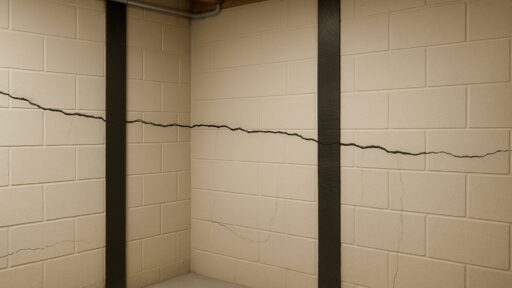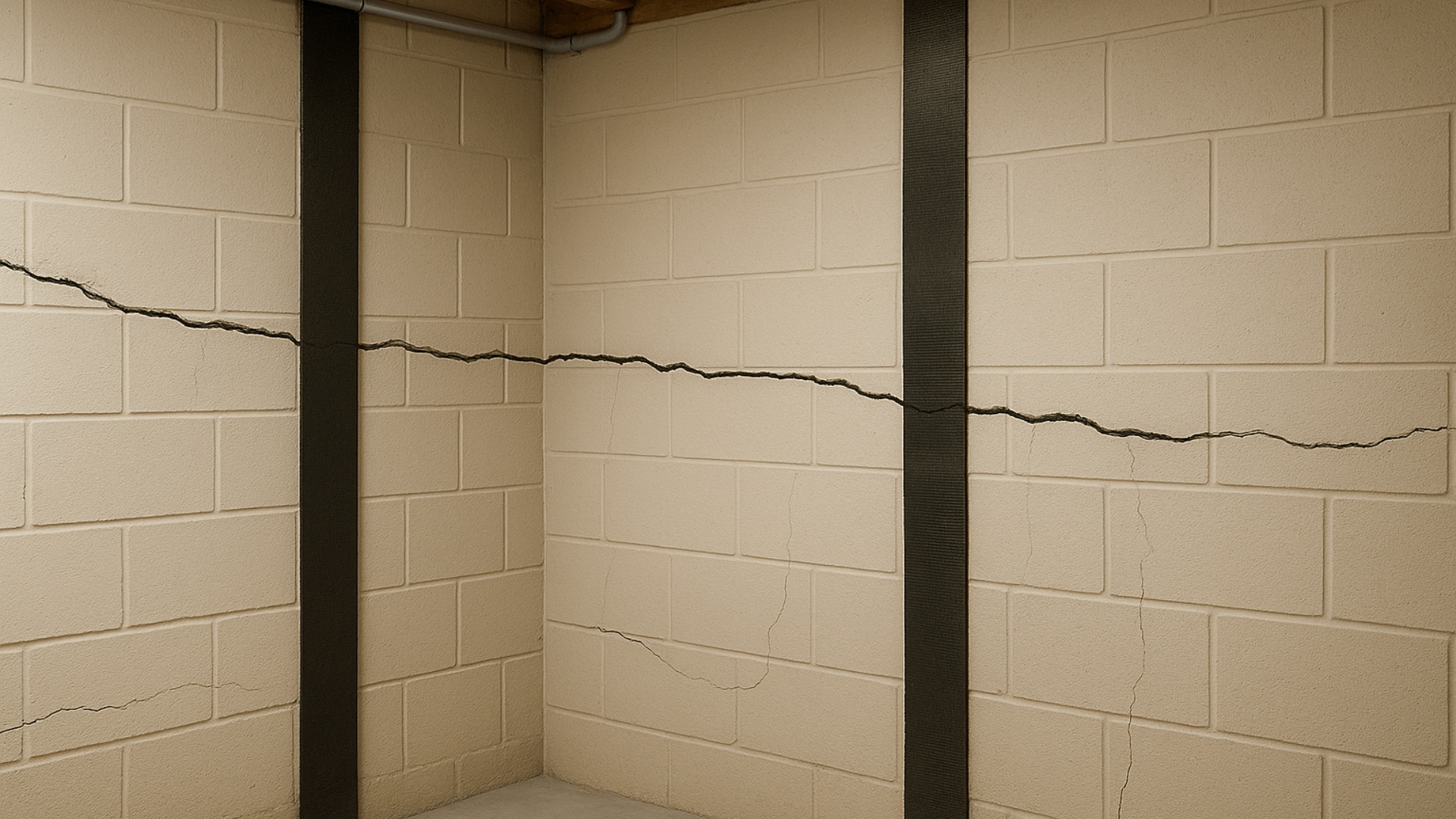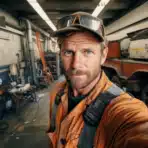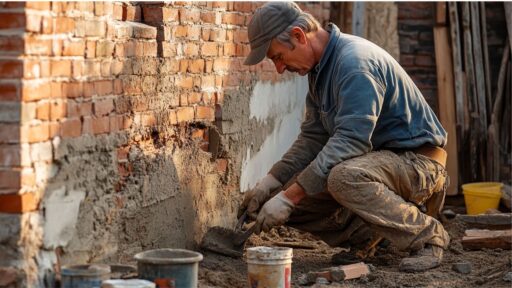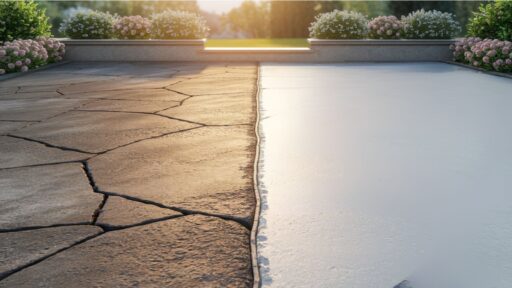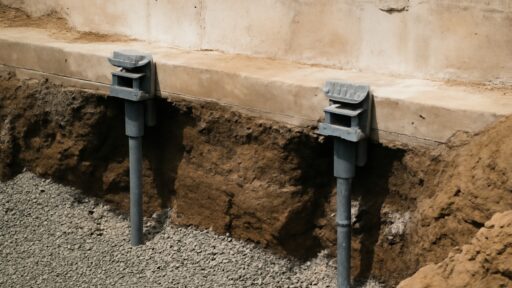Noticed your basement wall pushing inward?
You’re facing a bowed wall, a serious problem that threatens your home’s safety and value.
Bowed wall repair might sound intimidating, but understanding your options is the first step toward protecting your biggest investment.
If your wall shows early warning signs like small cracks or has advanced to severe bowing, solutions exist for every situation and budget.
Homeowners need practical knowledge about identifying, fixing, and preventing foundation problems before they worsen.
From DIY approaches for minor issues to professional repair methods for serious cases, we’ll cover all options.
You’ll learn exactly what to do when your foundation starts to fail.
What Are Bowed Walls?
Bowed walls are walls that curve or bulge inward instead of standing straight.
This happens when pressure from outside forces, like soil or water, pushes against the wall over time.
You might notice horizontal cracks along mortar joints or a visible inward curve when you look down the wall’s length.
Doors and windows might stick because the frame has shifted.
These problems aren’t just unsightly, they’re warning signs of serious structural issues.
A bowed wall weakens your home’s foundation and can eventually lead to complete wall failure if not addressed.
As the wall continues to bow, the structural integrity of your entire home becomes compromised.
This can cause problems throughout the building and decrease your property value.
What Causes Bowed Walls?
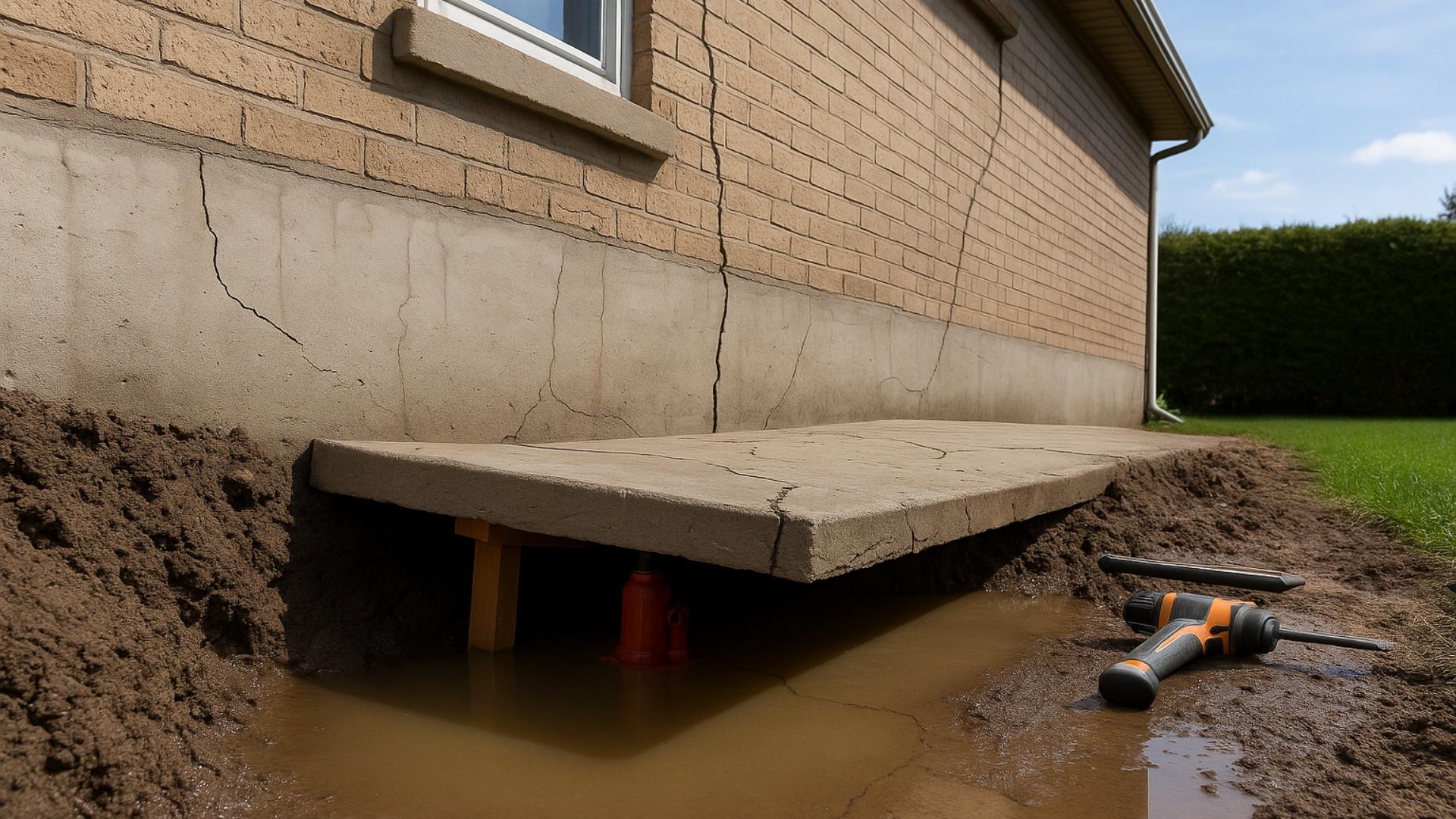
Several factors can cause walls to bow inward over time.
Understanding these causes helps homeowners identify potential problems early and take preventive action.
Find out the most common reasons walls begin to bow.
1. Soil Pressure and Hydrostatic Pressure
When the soil around your foundation gets wet, it expands and pushes against your walls.
After heavy rain, water builds up in the soil, creating hydrostatic pressure, a type of water pressure that pushes against your walls.
Clay soils are especially problematic because they swell when wet.
Over time, these pressures can become so strong that they cause walls to bow inward.
2. Foundation Settling
Houses naturally sink into the ground over time, a phenomenon known as settling.
When parts of your foundation settle unevenly, it puts stress on your walls.
This occurs when the soil under different areas has varying qualities or moisture levels.
As one section sinks more than another, walls can crack and bow. Even small uneven settling can damage walls.
3. Improper Drainage Systems
Your home requires effective drainage to direct water away from the foundation.
Without proper gutters, downspouts, or sloped landscaping, water collects around your foundation.
This trapped water soaks into the soil next to your walls.
When water has nowhere to go, pressure builds up against your basement walls.
Many bowed walls often begin with simple drainage issues.
4. Age and Weathering
Over the decades, foundation walls naturally weaken due to freeze-thaw cycles and the effects of aging.
Older homes often have foundation walls made with materials that deteriorate over time.
These materials can crack and lose strength as they age.
Homes built before modern building codes were in effect may also lack proper reinforcement in their foundation walls, making them more likely to bow.
Signs You Have a Bowled Wall
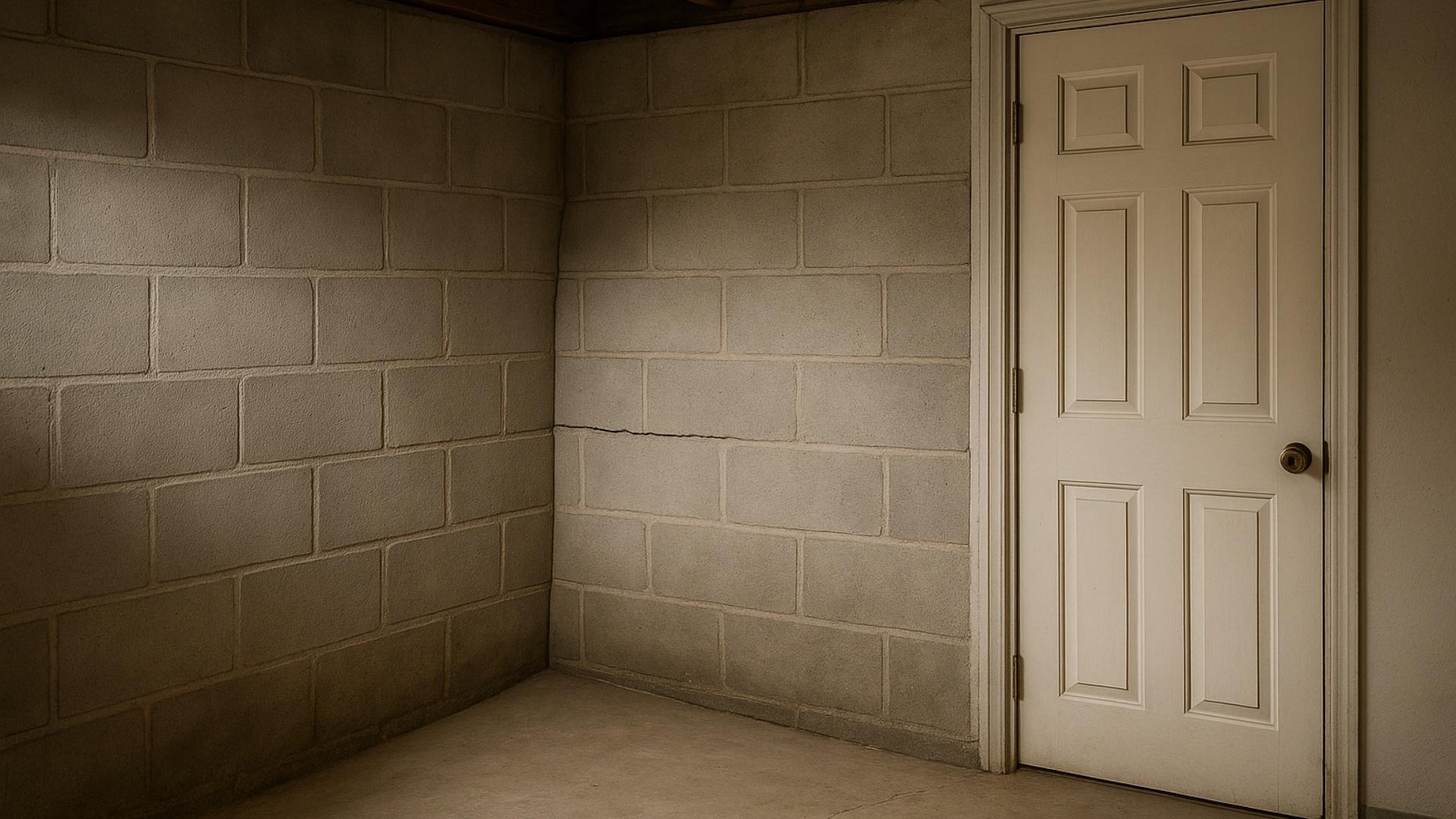
Spotting bowed walls early can save you thousands in repair costs.
Look for these warning signs around your basement or foundation walls:
- Horizontal cracks along basement walls, especially in the middle.
- Walls that curve inward when viewed from the side.
- Uneven width in mortar joints between blocks or bricks.
- Doors and windows that stick or won’t close properly.
- Sloping or uneven floors near the affected wall.
If you notice any of these signs, don’t wait to get your walls inspected.
The longer you delay, the worse the problem will get and the more expensive it will be to fix.
Different Methods for Repairing Bowed Walls
When it comes to fixing bowed walls, several effective methods exist.
The right solution depends on the severity of the bowing, your budget, and the specific conditions surrounding your home.
A professional contractor can help you choose the best option for your situation.
1. Carbon Fiber Straps
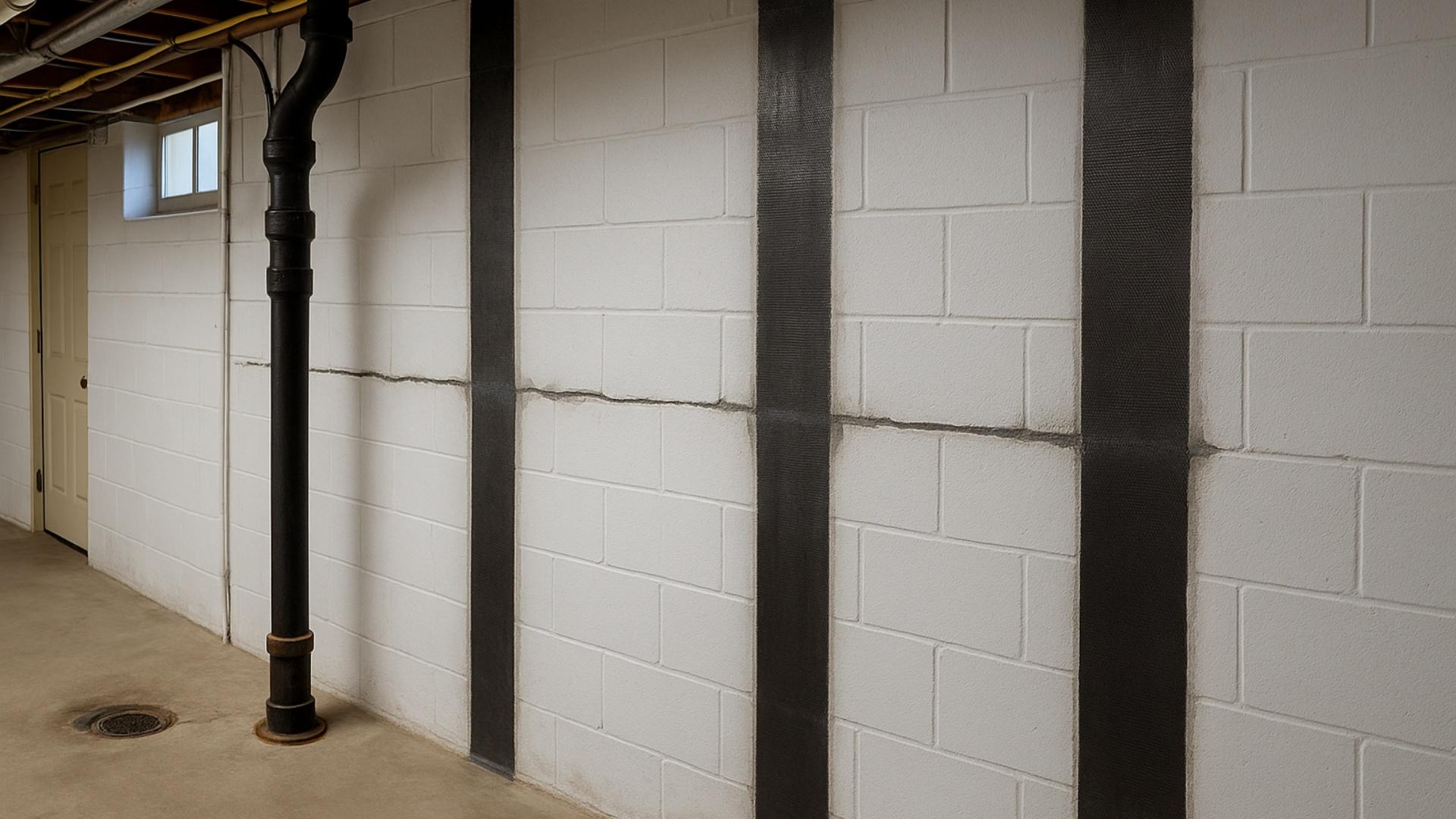
Carbon fiber straps are thin strips of super-strong material that get glued to your wall with epoxy.
They’re great for walls that are bowed less than 2 inches.
These straps don’t take up much space and can be painted over once installed.
They’re less expensive than other options and don’t require digging outside.
However, they work best for preventing further bowing, not fixing severely damaged walls.
Estimate Cost Range: $350–$600 Per Strap
2. Steel I-Beams
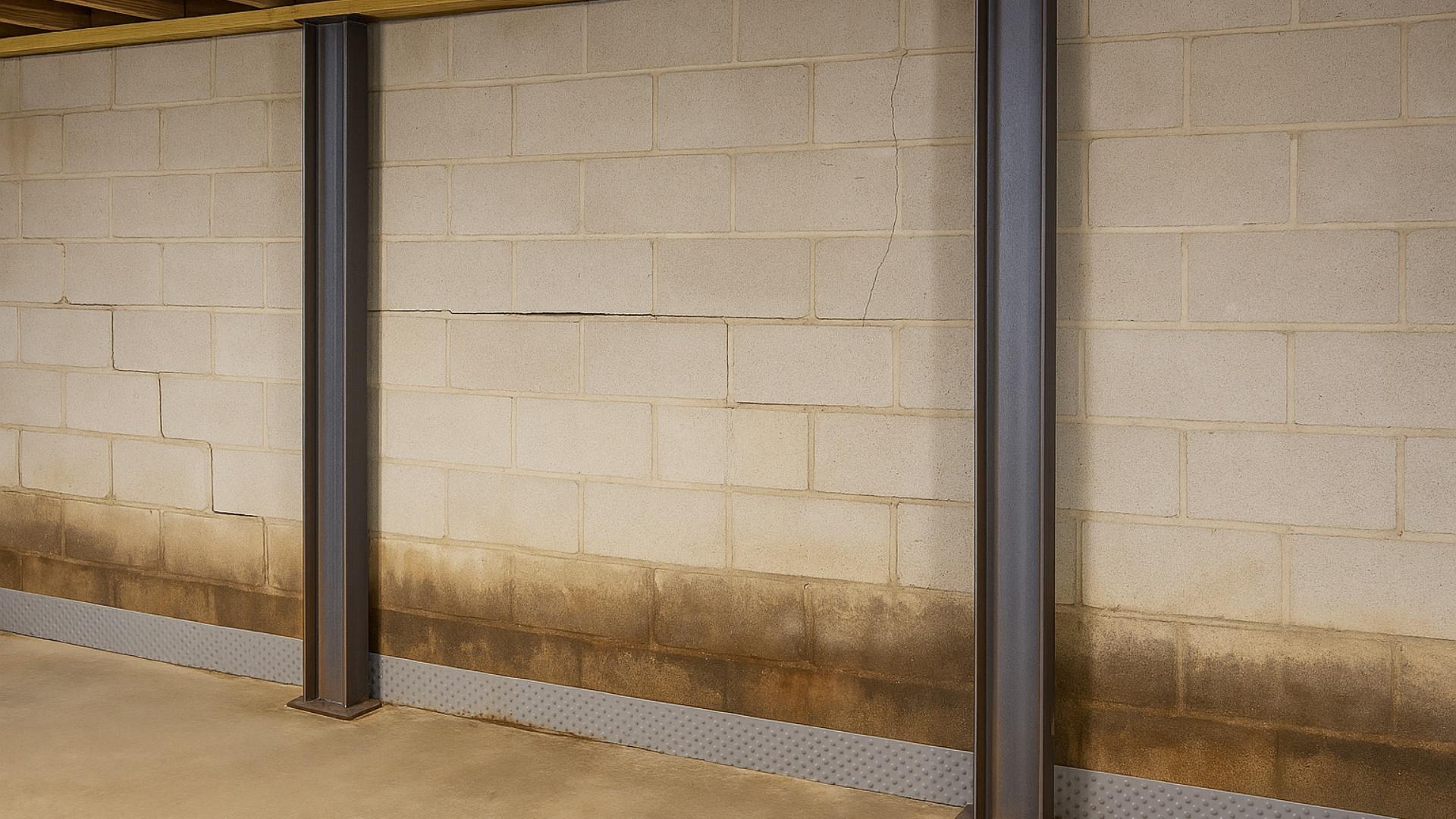
Steel I-beams are metal supports installed vertically against your bowed wall.
They’re used when walls have serious bowing (more than 2 inches).
These beams transfer the pressure from the wall to the floor and ceiling joists.
While effective for severely damaged walls, they occupy more space in your basement and are more expensive than carbon fiber.
They’re very visible but provide exceptional strength.
Estimate Cost Range: $400–$700 Per Beam
3. Wall Anchors
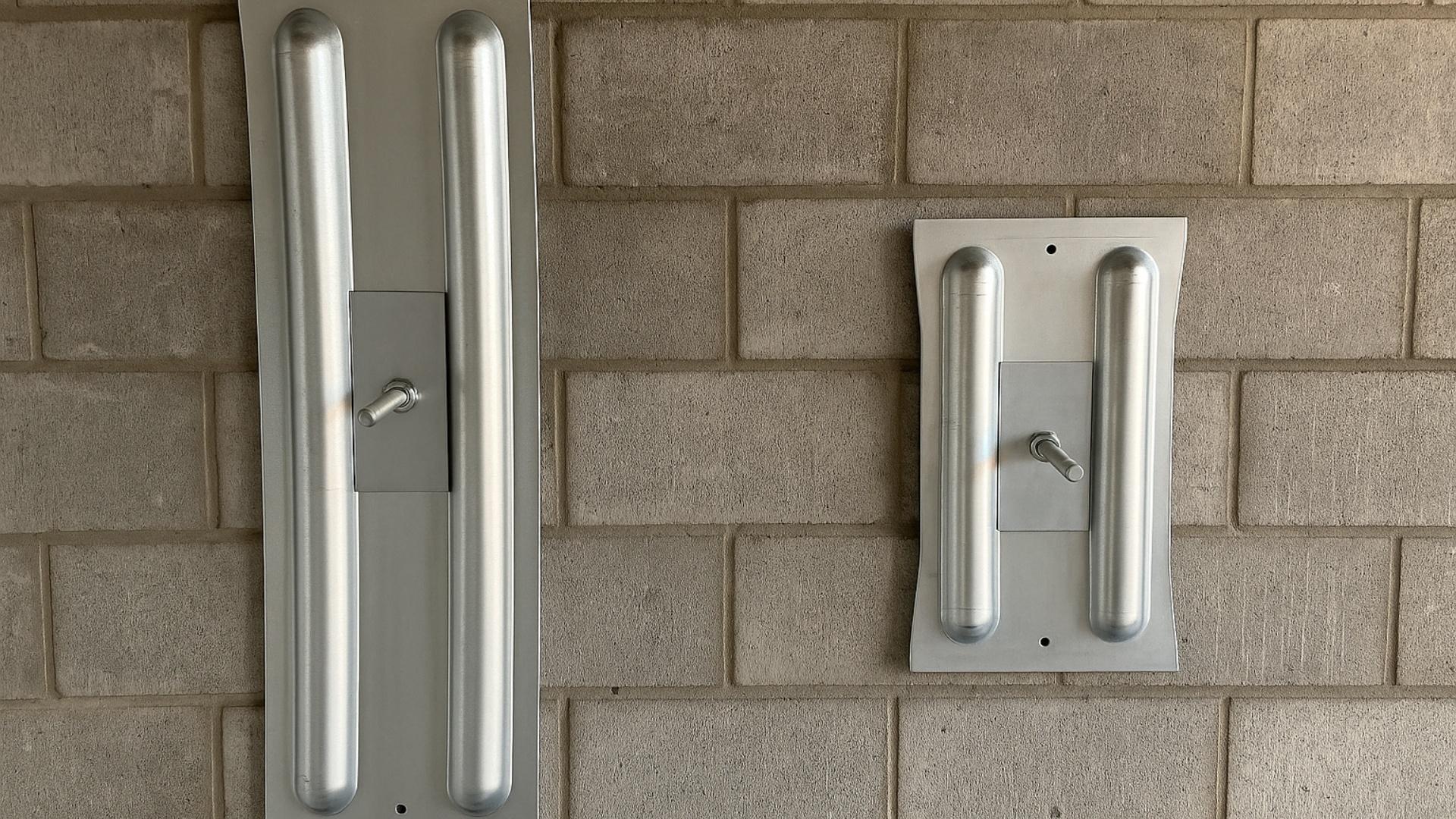
Wall anchors connect your basement wall to the soil outside using steel rods.
One end attaches to a plate on your wall, while the other connects to an anchor buried in your yard.
Installers tighten these anchors to straighten the wall over time gradually.
This method requires access to the outside of your home and enough yard space.
Wall anchors work well for most bowed walls.
Estimate Cost Range: $700–$1,000+ Per Anchor
4. Helical Piers
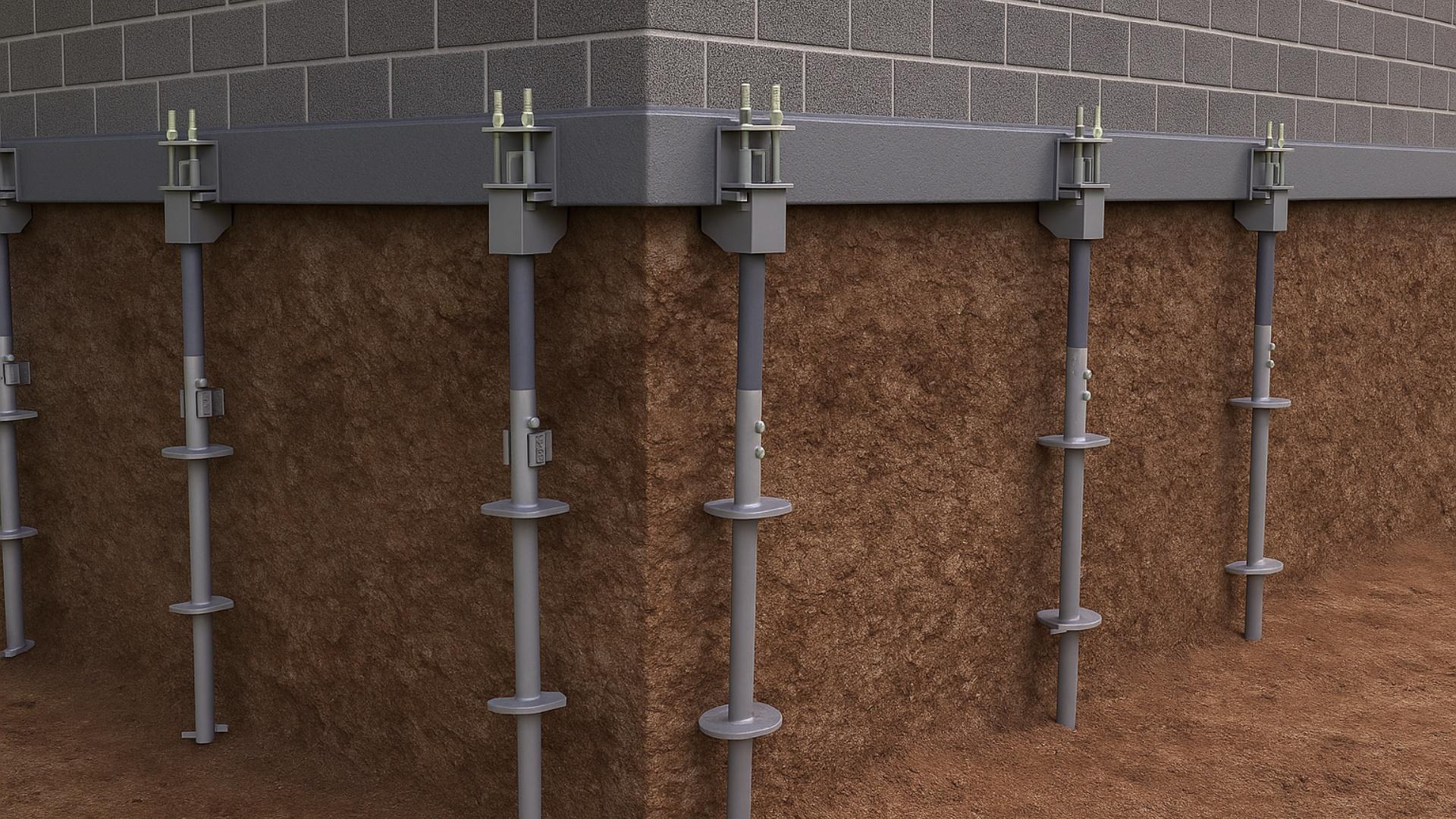
Helical piers are screw-like metal shafts that get driven deep into the ground under your foundation.
They reach stable soil beneath the troublesome layers, causing problems.
These piers lift and stabilize foundations that have settled unevenly.
By addressing the root cause of foundation issues, helical piers can effectively fix bowed walls.
They’re often used in conjunction with other repair methods when foundation settlement is involved.
Estimate Cost Range: $1,500–$3,000+ Per Pier
DIY VS. Hiring a Professional
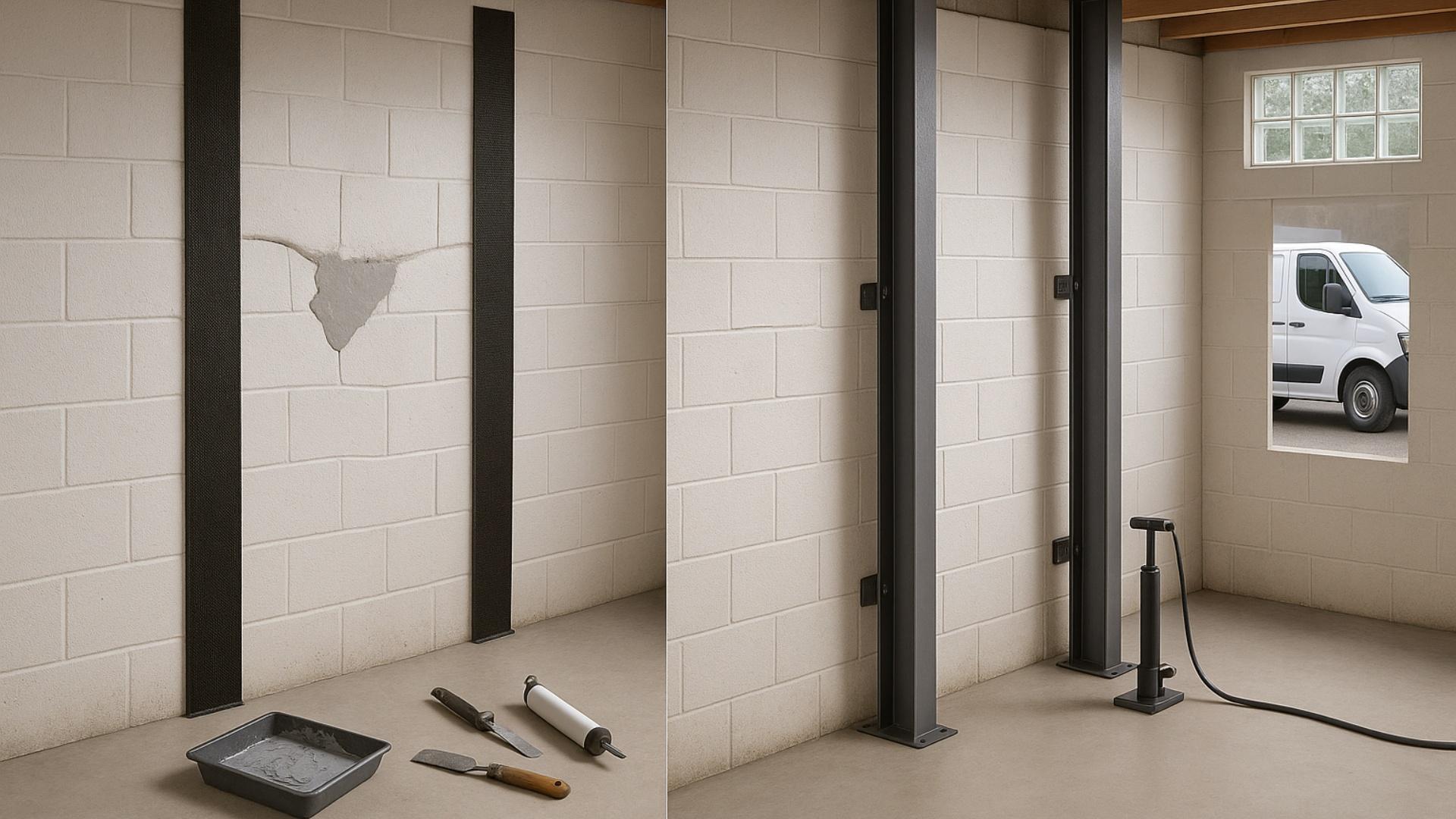
Minor wall bowing (less than 1 inch) can sometimes be handled by skilled homeowners.
DIY repairs use epoxy kits and carbon fiber strips, costing $300-$800 in materials.
Always start by fixing drainage issues that caused the problem.
However, DIY repairs often miss underlying causes.
This leads many homeowners to hire professionals anyway, eventually.
For serious bowing, professional foundation contractors are essential.
Get three estimates from specialists. Check reviews and verify licensing.
Professional repairs typically cost between $4,000 and $8,000 and take 1-3 days to complete.
Always opt for a 10-year warranty on both materials and labor.
Good companies provide follow-up inspections after 6 to 12 months.
Professional repairs often save money by solving the problem completely.
Preventing Future Bowing and Wall Damage
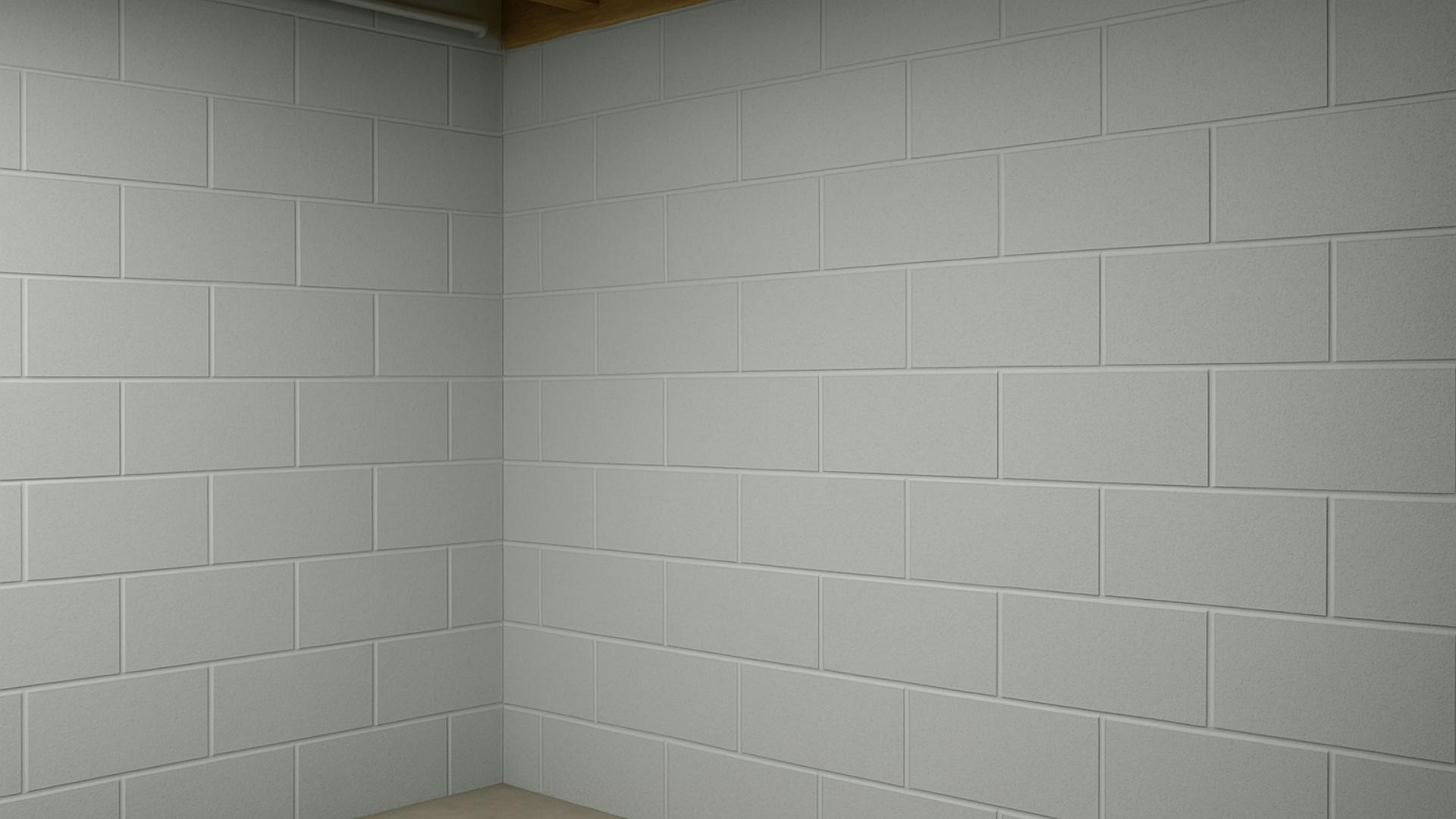
After repairing a bowed wall, you’ll want to prevent the problem from happening again.
Most wall bowing issues are caused by water and soil pressure, which means proper maintenance can help protect your foundation.
- Extend downspouts at least 6 feet away from your foundation.
- Ensure ground slopes away from foundation (1-inch drop per foot).
- Add gravel around the foundation to improve drainage.
- Check and seal foundation cracks twice yearly.
- Install a sump pump if you live in an area prone to flooding or high water levels.
Remember that prevention is much less expensive than repairs.
A yearly maintenance routine focused on keeping water away from your foundation will prevent serious structural problems.
Wrapping It Up
Bowed wall repair isn’t something to put off until tomorrow.
Every day you wait, pressure continues pushing against your foundation, making the problem worse and more expensive to fix.
If you choose carbon fiber straps for minor bowing or need wall anchors for serious cases, the solution matters.
Addressing the issue promptly protects your home and your wallet.
Remember that proper drainage and regular maintenance are your best defenses against future problems.
By keeping water away from your foundation, you’ll prevent the conditions that cause walls to bow in the first place.
Take action today, your home deserves the care and attention that will keep it standing strong for years to come.
Learned how to spot bowed walls?
Explore more blogs in our home maintenance section to keep your home safe!

